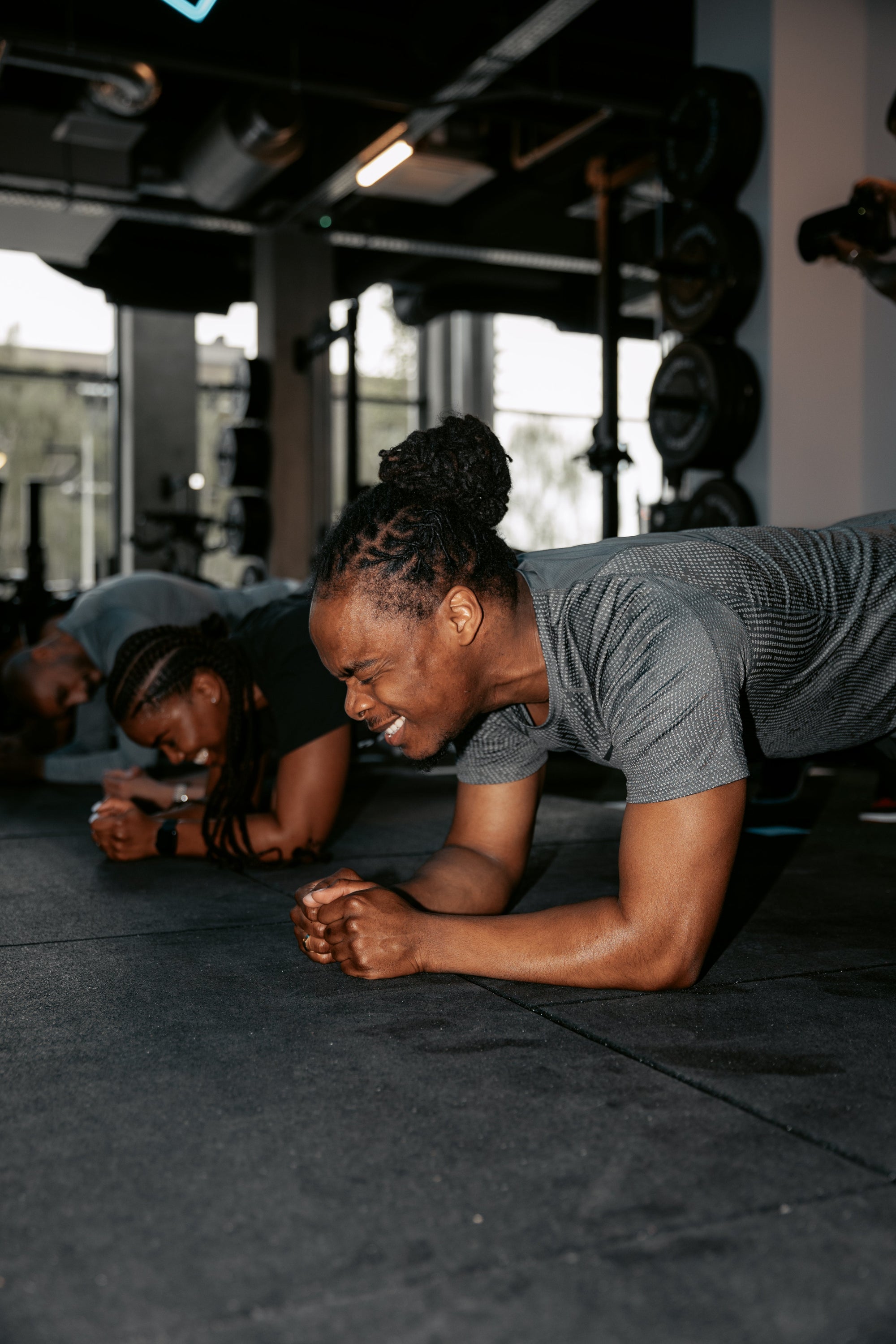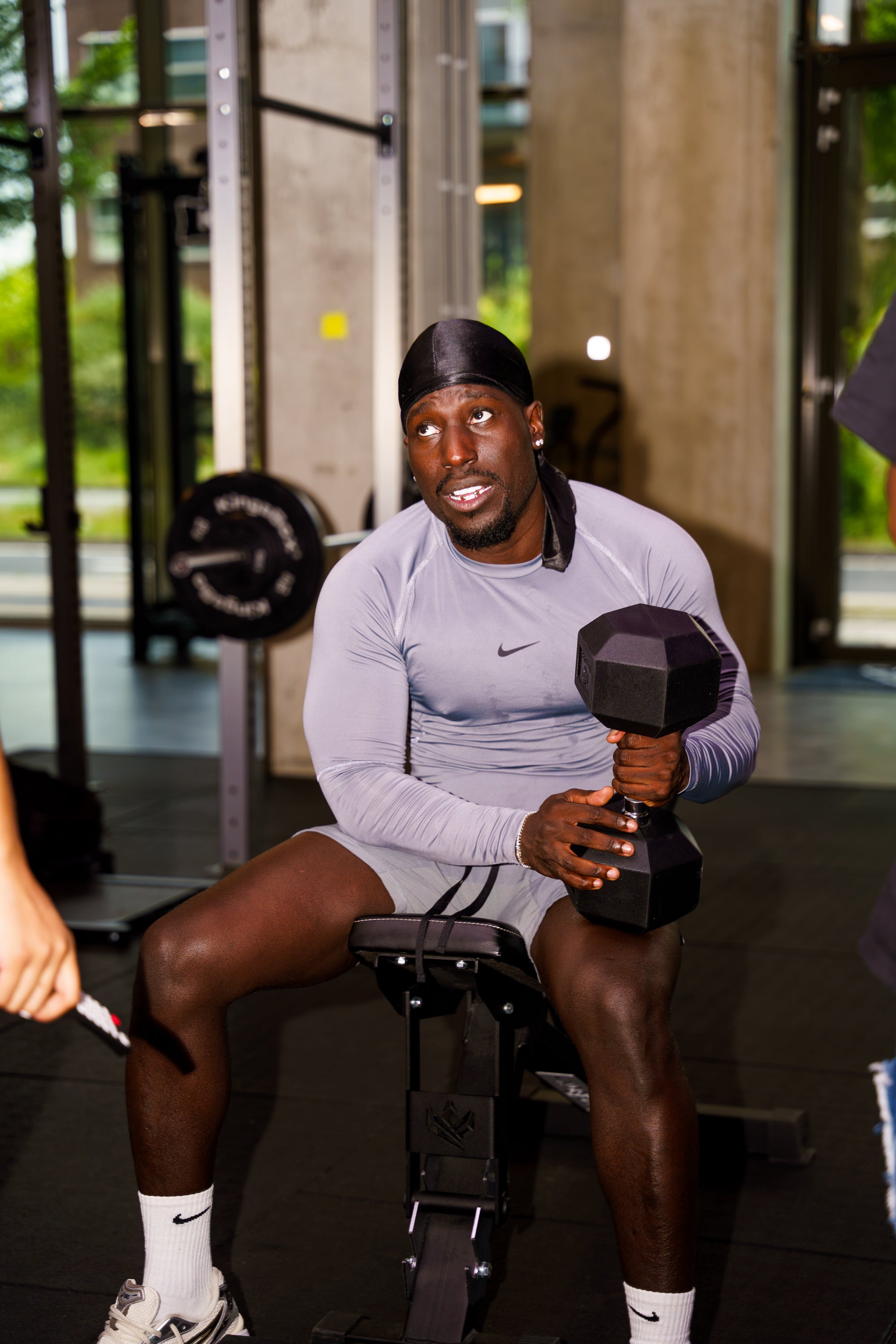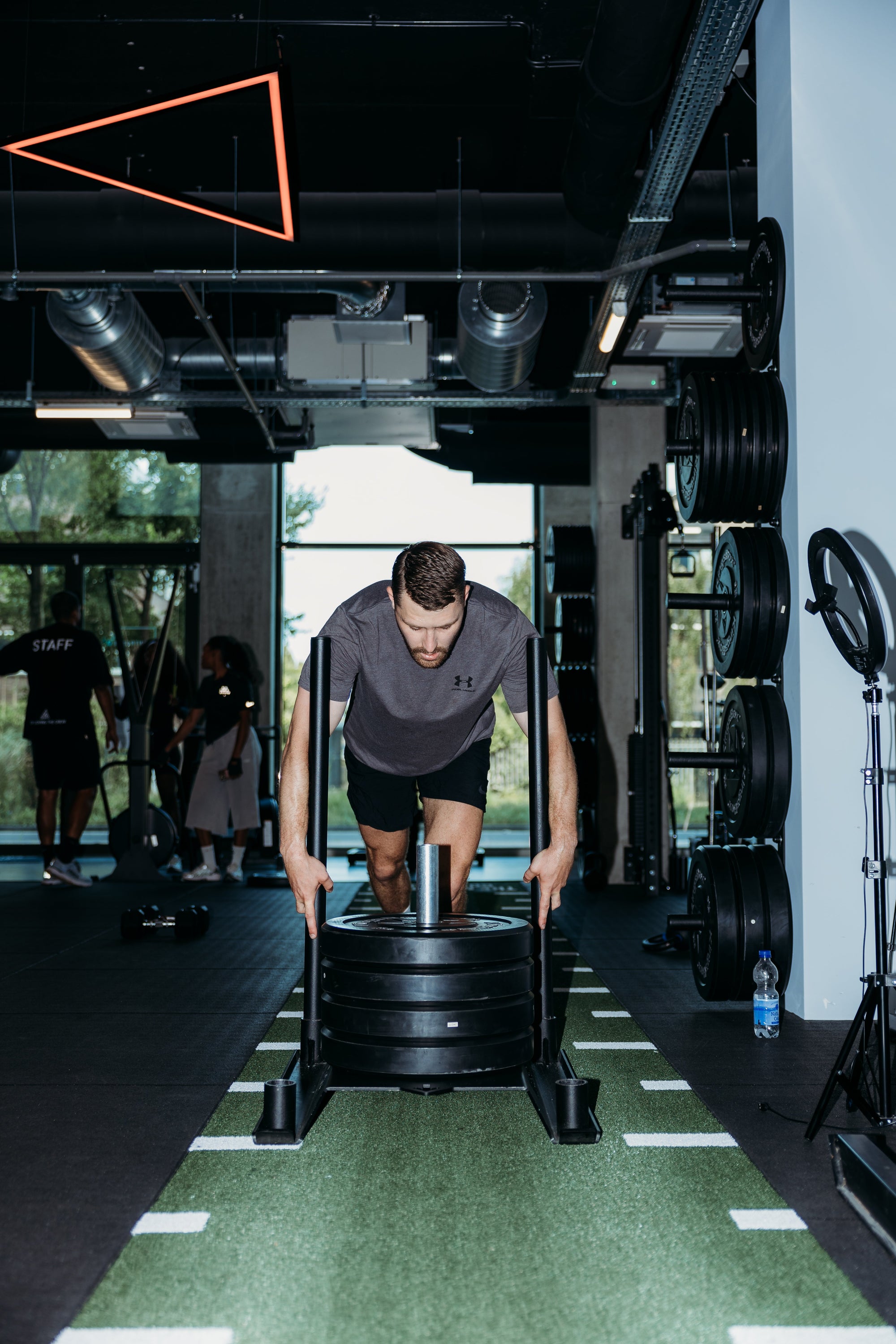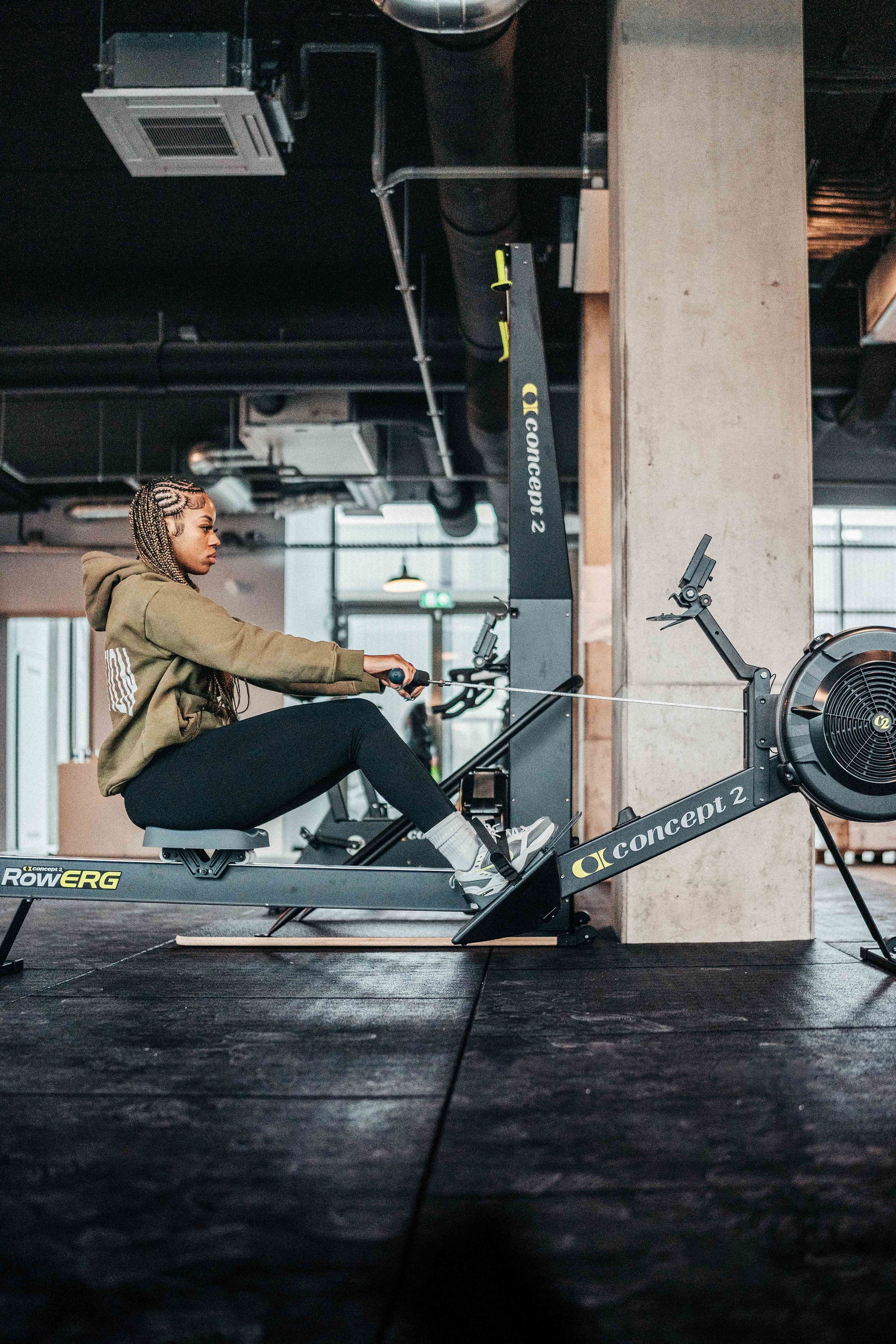Post-Event Recovery: Expert Advice for After a Hyrox Competition
Champion, your race may be over, but the work is just beginning. Post-event recovery is the secret weapon that transforms hard-fought effort into lasting gains. At BallinFit, we know that how you recover after a Hyrox competition can set the stage for future victories. Our head coach, Zwayder, emphasizes that the recovery period is just as crucial as the race itself. In this in-depth guide, we’ll dive into expert recovery techniques, actionable tips, and real-world insights to help you bounce back, rebuild, and come back stronger than ever.
The Importance of Post-Event Recovery
When you cross the finish line, your body has undergone a tremendous amount of stress. Every sprint, every wall ball, and every push has taken its toll on your muscles, nervous system, and energy stores. Without proper recovery, these stresses can lead to lingering fatigue, increased risk of injury, and even a plateau in your performance improvements.
Key Benefits of Effective Recovery:
-
Muscle Repair and Growth:
Recovery allows your muscles to repair microscopic tears and rebuild stronger, paving the way for improved strength and endurance.
-
Energy Restoration:
Replenishing glycogen stores and rehydrating ensures you’re ready for your next training session or competition.
-
Injury Prevention:
Giving your body time to heal reduces the risk of overuse injuries and chronic fatigue, helping you stay in the game for the long run.
-
Mental Refreshment:
A well-structured recovery plan not only heals your body but also resets your mind, reducing stress and enhancing focus for future challenges.
Coach Zwayder’s Insight:
"Post-event recovery isn’t just about taking a break—it’s a strategic phase where every minute you invest helps build the foundation for your next win. Treat recovery as an integral part of your training cycle, and you'll find that every competition makes you stronger."
Key Recovery Techniques to Accelerate Your Comeback
Let’s explore the recovery strategies that top Hyrox athletes use to turn race day fatigue into a stepping stone for future success.
1. Immediate Cool-Down: Transitioning from Competition Mode
After you finish a Hyrox event, the first step is to properly cool down. This helps prevent muscle stiffness and aids in the gradual return of your heart rate to normal levels.
What to Do:
-
Light Cardio:
Immediately after the race, engage in 5–10 minutes of light jogging or brisk walking. This active cooldown helps remove lactic acid from your muscles and reduces the risk of post-event muscle soreness.
-
Static Stretching:
Follow your light cardio with 10 minutes of static stretching. Focus on major muscle groups such as your quads, hamstrings, calves, and shoulders. Hold each stretch for 20–30 seconds to encourage muscle relaxation and lengthening.
-
Deep Breathing:
Incorporate deep, mindful breathing during your cool-down to help lower your heart rate and ease your nervous system into recovery mode.
Real-World Example:
After a recent Hyrox event, athlete Lisa swore by her cool-down routine. By dedicating 15 minutes to light jogging and stretching immediately post-race, she reduced her muscle stiffness and reported feeling noticeably less fatigued in the following days.
2. Rehydration: Replenishing Lost Fluids
Hydration is critical after any intense workout. During a Hyrox competition, you lose a significant amount of fluids through sweat, and failing to replace them can hinder your recovery.
What to Do:
-
Start Early:
Begin rehydrating immediately after finishing the race. Sip on water or an electrolyte drink to start replenishing lost fluids.
-
Electrolyte Balance:
Use an electrolyte beverage to restore sodium, potassium, and magnesium levels, which are vital for muscle function and recovery.
-
Monitor Your Hydration:
A simple method is to check the color of your urine—aim for a pale, straw color. Darker urine is a sign that you need more fluids.
Coach Zwayder’s Tip:
"Don’t wait until you're thirsty—thirst is already a signal that you're dehydrated. Make hydration a consistent habit, especially after a race, and you’ll see a remarkable difference in your recovery speed."
3. Post-Event Nutrition: Fueling the Recovery Process
What you eat right after a race is crucial to jumpstarting the muscle repair process and replenishing energy stores.
Key Nutritional Strategies:
-
Protein and Carbohydrates Combo:
Within 30–60 minutes after the event, aim to consume a meal or shake that combines lean protein (to aid muscle repair) with fast-digesting carbohydrates (to replenish glycogen stores).
Examples:
- A protein shake blended with a banana and a spoonful of almond butter.
- Grilled chicken with quinoa and steamed vegetables.
-
Antioxidant-Rich Foods:
Include fruits and vegetables high in antioxidants (such as berries, spinach, and bell peppers) to help combat inflammation and promote recovery.
-
Hydration with Nutrients:
Consider a recovery drink that not only provides fluids and electrolytes but also includes a small amount of protein and carbohydrates.
Real-World Example:
Tom, a regular at BallinFit, improved his post-event recovery by switching to a recovery shake that combined whey protein, a banana, and a handful of spinach. Over time, he noticed faster muscle repair and less soreness after races.
4. Active Recovery: Keeping the Blood Flowing
Active recovery involves low-intensity exercise that keeps your muscles moving without adding stress. This helps maintain circulation and speeds up the removal of metabolic waste.
What to Do:
-
Light Activity:
On the day after the race, engage in low-impact activities such as a gentle yoga session, a brisk walk, or an easy bike ride. Aim for 20–30 minutes of activity that gets your blood flowing without overloading your muscles.
-
Stretching:
Incorporate a dedicated stretching session focused on areas that feel particularly tight or sore. Use dynamic stretches to maintain mobility and flexibility.
-
Foam Rolling:
Use a foam roller on your major muscle groups to release tension and improve circulation. Spend at least 1–2 minutes per muscle group.
Pro Tip:
Active recovery isn’t about pushing hard—it’s about gentle movement to facilitate healing. Listen to your body and adjust the intensity based on how you feel.
5. Rest and Sleep: The Ultimate Recovery Tools
Quality rest is perhaps the most underrated part of recovery. It’s during sleep that your body repairs itself, rebuilds muscle tissue, and consolidates the gains from your training.
What to Focus On:
-
Aim for 7–9 Hours:
Ensure you get a full night’s sleep following the event. Quality sleep is essential for cognitive and physical recovery.
-
Create a Relaxing Environment:
Develop a pre-sleep routine that might include reading, meditation, or listening to calming music. Avoid screens at least an hour before bedtime.
-
Monitor Sleep Quality:
Use a sleep tracker to ensure you’re not just getting enough hours, but also the quality of sleep that leads to effective recovery.
Coach Zwayder’s Insight:
"Sleep is when the real recovery happens. Prioritize rest, and you’ll see not only faster muscle repair but also a sharper mind and improved overall performance."
6. Recovery Tools: Leveraging Technology and Equipment
Investing in recovery tools can accelerate your healing process and help you bounce back quicker after a race.
Essential Recovery Tools:
-
Foam Rollers and Massage Guns:
These tools help alleviate muscle tightness and improve blood circulation. Use them post-event to target specific muscle groups that feel particularly sore.
-
Compression Garments:
Wearing compression sleeves or socks after the event can reduce swelling and muscle vibration, aiding in quicker recovery.
-
Cold and Heat Therapy:
- Cold Therapy: Use ice packs or take an ice bath immediately after the race to reduce inflammation and numb muscle soreness.
- Heat Therapy: Later in the recovery process, apply heat to relax tight muscles and increase blood flow.
Pro Tip:
Alternate between cold and heat therapy—a method known as contrast therapy—to maximize the benefits. Experiment during training to see which combination works best for you.
7. Long-Term Recovery: Planning for Consistency
Recovery isn’t just a one-day event—it’s a continuous process. Planning your long-term recovery strategy ensures that you’re consistently at your best for every race.
Strategies for Long-Term Recovery:
-
Recovery Days:
Integrate regular recovery days into your training schedule. Even during intense training phases, don’t skip days dedicated solely to active recovery.
-
Regular Check-Ins:
Keep a training journal to monitor how you feel after each event. Note improvements, persistent soreness, or any signs of overtraining.
-
Adjust Your Training:
Use the insights from your recovery journal to adjust your training load, intensity, and recovery practices. Continuous improvement is all about fine-tuning your approach.
Real-World Example:
At BallinFit, our athletes are encouraged to review their recovery progress every week. One competitor, Mark, adjusted his training after noticing that shorter recovery days led to diminishing returns. By adding an extra active recovery session, his performance not only improved but his overall training became more sustainable.



